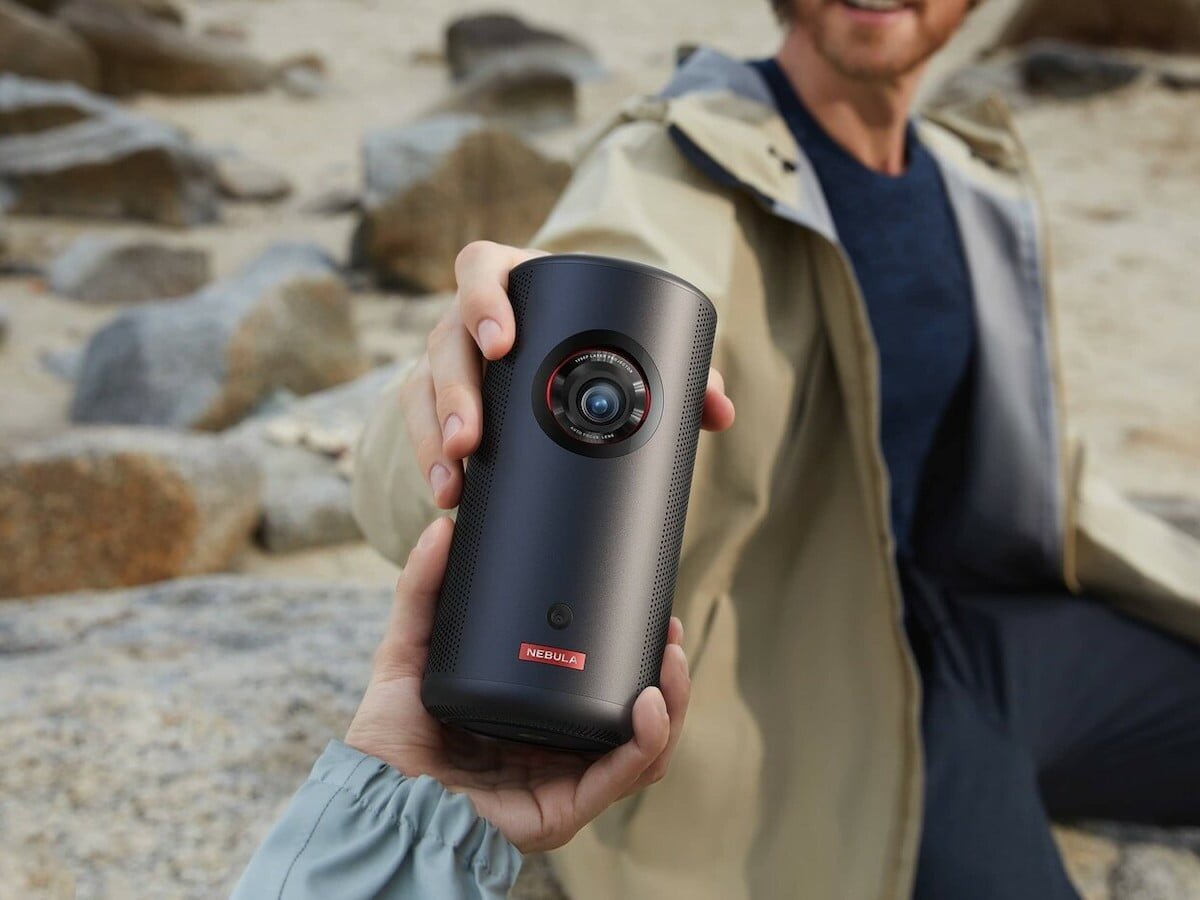Nebula Capsule 3 has some serious compromises across image quality, sound, software, hardware, and smart features. Touted as Anker’s most advanced pocket-sized projector, the Nebula Capsule 3 unfortunately fails to live up to the hype.
From subpar projection quality to lackluster sound to unstable software, the Capsule 3 stumbles at nearly every turn. For a premium-priced product, the alarming number of compromises and lack of refinement are unacceptable.
Discerning consumers expecting cinema-like visuals and audio in a miniaturized package will find the Capsule 3 sorely lacking. Its dim, fuzzy picture, tinny sound, clumsy interface, unreliable apps, and other flaws leave much to be desired.
As this extensive review will examine, the Nebula Capsule 3 serves as a cautionary tale about prioritizing portability above all else. Anker cut far too many corners for this product to satisfyingly deliver on its central premise of big-screen entertainment anywhere. For a portable projector done right, look elsewhere.
Image Quality Issues
- One of the main selling points of any projector is a clear, detailed image, and unfortunately the Capsule 3 falls short in this area. With a resolution of just 1280×720 pixels, images are not sharp or vivid. Everything has a soft, blurry look to it, lacking fine detail and crisp definition.
- The weak LED light source also produces dull, dim projections. At just 200 ANSI lumens, the Capsule 3 doesn’t get bright enough for comfortable daytime viewing. Images are washed out and lacking contrast. Colors also look muted and inaccurate, with poor saturation and skewed color balances.
- Problems with focus are also common, with fine tuning difficult due to the lack of zoom or lens shift capabilities. This can make images appear blurry or out of focus around the edges.
Audio Problems
- Sound from the tiny built-in 5W speaker is predictably weak. Volume is lacking even in smaller rooms, and distortion becomes an issue at higher levels. There is also no bass presence, leading to thin, tinny audio.
- Connecting external speakers or headphones can help, but wireless pairing is spotty. Bluetooth connections will often cut out or lag behind video. There is an aux port for wired audio, but sound optimization is limited.
Software and App Issues
- The Capsule 3 runs on Anker’s proprietary Nebula UI, which feels unpolished and sluggish. Navigation is unintuitive, settings are limited, and adjustments like focus control are clumsy and imprecise.
- Compatibility and support for streaming apps is also limited. Only a handful of major apps are available, with no support for niche services. Connecting and controlling the projector from a smartphone is also buggy, with frequent latency and syncing problems.
Hardware and Design Flaws
- On the outside, the Capsule 3 has a cheap plastic feel that belies its premium price tag. The all-white color shows scuffs and scratches easily, and the lack of lens cover or carrying case makes it hard to transport safely.
- Inside, the mediocre hardware contributes to some of the performance issues already mentioned. But there are also problems unique to the design, like inadequate cooling that causes the projector to overheat and even shut down after prolonged use.
- The built-in battery only lasts about 2.5 hours as well, meaning you’ll need constant power access for longer viewing sessions.
Lack of Smart Features
- For a product marketed as a contemporary portable cinema, the lack of smart connectivity is disappointing. There is no voice control option, hampering quick searches, playback commands, or hands-free navigation.
- Connection capabilities are also limited. Screen mirroring from laptops and PCs works decently, but hookups to smart home ecosystems are spotty. There is no integration with voice assistants like Alexa or Google either.
Some better portable projector options in a similar price range to the Nebula Capsule 3:
- Anker Nebula Mars II Pro ($500) – Anker’s higher-end portable projector has 720p resolution but a brighter 500-lumen image. It also has better sound with a 10W speaker and Dolby Digital support. Runs the same Nebula software but with fewer bugs.
- LG PF50KA ($450) – Compact and lightweight LED projector from LG. Also 720p but the image quality is sharper and the color accuracy much better. Built-in battery lasts up to 2.5 hours. Smart TV interface and streaming apps included.
- ViewSonic M1 ($370) – More affordable but still solid performing. 600 lumens and 1080p resolution for a detailed image. Harman Kardon speaker provides decent sound. Lightweight and easy to transport.
- Xgimi MoGo Pro ($450) – 900 ANSI lumen output produces bright projections even in ambient light. Still very compact and portable. Android TV interface gives access to tons of apps. Built-in battery lasts up to 3 hours.
- Anker Nebula Capsule II ($580) – The previous generation Capsule model has a brighter 200-lumen lamp and better contrast. Runs an older version of the Nebula software with fewer issues reported. Overall better image and build quality.
For More Smart Trending Gadgets Follow Us.
Conclusion
While miniature in size, the Nebula Capsule 3 comes up short in many of the key areas that matter for a good projector. Subpar image and sound quality, glitchy software, questionable hardware, and minimal smart features make this hard to recommend for most users. For $400+, there are better portable projectors available that don’t force as many compromises.

Role at Trending Gadgetz: At trendinggadgetz.com, Emma is responsible for personally reviewing a wide array of gadgets. From smartphones and laptops to innovative smart home devices, she ensures that each review is thorough, fair, and informative.
Her process involves rigorous testing, comparison, and evaluation, focusing not just on the technical specifications but also on user experience, design, and value for money.
